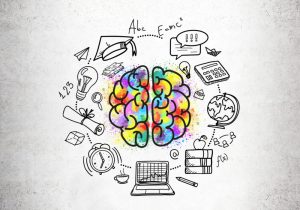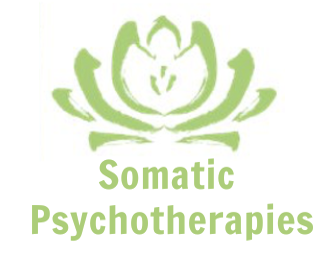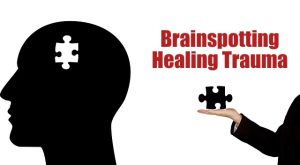What Is Brainspotting And How Can It Help You?
 Brainspotting is a type of therapy that helps people process emotional and psychological trauma or distress. It is based on the idea that where we look with our eyes can influence how we feel and process emotions.
Brainspotting is a type of therapy that helps people process emotional and psychological trauma or distress. It is based on the idea that where we look with our eyes can influence how we feel and process emotions.
Here’s How It Works:
- The Connection Between Eyes And Emotions: When we experience distressing emotions or trauma, our brain stores those feelings in a way that can be hard to access through regular talk therapy. However, research has shown that the eyes are closely linked to brain regions that process emotions and trauma. The position of your eyes can reveal where unprocessed or trapped emotions are stored in your brain.
- Identifying Brainspots: During a Brainspotting session, your therapist will guide you to focus on a particular point in your visual field while you recall or focus on a difficult memory, emotion, or issue. This specific “brainspot” is a place where the brain is holding onto unresolved feelings. The therapist may also ask you to notice any sensations or emotions that arise while you focus on that spot.
- Processing The Trauma: As you focus on the brainspot, your brain can begin to process those emotions or memories. This can happen in a safe and controlled way, without needing to relive or discuss the traumatic event. The goal is to release any emotional blockages or unprocessed trauma and help the brain rewire itself in a healthier way.
- The Role Of The Therapist: As your therapist I will provide support, guidance, and safety throughout the process. I may also use other supportive techniques, like “bilateral brain stimulation,” (specifically designed music to stimulate both sides of the brain simultaneously) to enhance the processing. The therapy is very gentle, but it can also be quite powerful in helping you access deep emotional material and release it.
How Brainspotting Helps The Brain:
 The neuroscience of Brainspotting is grounded in how the brain processes and stores trauma and emotional experiences. It’s a therapeutic technique, developed by Dr. David Grand in 2003 after working with EMDR (Eye Movement Desensitisation and Reprocessing) in his therapeutic practice.
The neuroscience of Brainspotting is grounded in how the brain processes and stores trauma and emotional experiences. It’s a therapeutic technique, developed by Dr. David Grand in 2003 after working with EMDR (Eye Movement Desensitisation and Reprocessing) in his therapeutic practice.
While using EMDR with his clients, Dr. Grand noticed that when clients focused on specific eye positions while processing trauma, some individuals seemed to experience significant breakthroughs and emotional shifts even when there were no actual eye movements involved. This led him to question whether the eye position alone was enough to help access and process emotional material, without necessarily needing the rapid eye movements required by EMDR.
Dr. Grand’s observation that certain eye positions could be associated with particular emotional states, and that focusing on those positions could help clients access and process trauma, led him to create Brainspotting. Brainspotting is a gentler and more targeted approach where the therapist helps the client locate a “brainspot,” an eye position that corresponds to a particular emotional issue, and focuses on it to activate the brain’s processing systems.
So, while Brainspotting shares a connection to EMDR (especially in its use of eye positions), it diverges by emphasising the healing potential of eye positions alone, without requiring the back-and-forth eye movements seen in EMDR. Thus, Brainspotting uses a person’s eye position to access and process emotional or traumatic memories. The neuroscience behind Brainspotting combines elements of neurobiology, neuroscience, and trauma research.
Here’s an overview of how it works from a neurological perspective:
1. The Brain-Body Connection:
Brainspotting builds on the concept that our brain and body are deeply connected. Traumatic experiences or deeply emotional memories are often stored in the brain in a fragmented way. The limbic system (the emotional centre of the brain) processes trauma and emotional experiences but may not fully integrate them, leading to emotional and physical dysregulation. These memories can remain stuck in the body, influencing physical symptoms, emotions, and behaviours.
- Neuroscientific Basis: Brainspotting is grounded in the idea that the brain encodes trauma not just in memories but also in body sensations. Through the eyes and visual field, it’s possible to access areas of the brain where unprocessed trauma resides.
2. Eye Position And Brain Processing:
A central concept of Brainspotting is the connection between eye positions and brain activity. The brain has an automatic way of storing and processing emotional and traumatic experiences. When we think of a memory or emotion, the eyes tend to move to specific positions. These positions are thought to correspond to certain emotional states and the regions of the brain where these emotional experiences are stored.
- Dual Attention: During Brainspotting, the therapist guides the client to focus on a specific “spot” in the visual field, typically while the person is focusing on a distressing memory, emotion, or sensation. This helps activate the brain’s processing (subconscious) systems and allows emotional material to surface. It’s understood that the subcortical brain (including areas such as the amygdala and hippocampus, which are involved in emotional responses and memory) becomes activated through this focused eye position, leading to deeper emotional processing.
3. Activating The Subcortical Brain:
The subcortical brain, including the amygdala (responsible for emotional responses, especially fear) and the hippocampus (responsible for memory), plays a key role in trauma. In typical trauma, the prefrontal cortex, which is involved in higher reasoning and emotional regulation, can become disconnected from these emotional areas of the brain. This can cause a trauma memory to be stored in a disorganised and overwhelming way, making it harder to process.
- How Brainspotting Helps: Brainspotting helps activate these deeper areas of the brain (the subcortical regions) while also maintaining the person’s conscious awareness. It bypasses the higher cognitive brain, allowing the emotions tied to the trauma to be processed without needing to verbalise or re-experience the trauma in a conscious way. The eye positions used in Brainspotting facilitate this access, enabling emotional release and integration.
4. Somatic Activation And Release:
Trauma is often stored in the body, with physical symptoms like tension, tightness, or discomfort emerging in areas linked to emotional pain. Brainspotting works with somatic activation—meaning that as the client focuses on the trauma or emotional issue, physical sensations often arise. These somatic feelings can provide valuable clues about how the trauma is stored in the body.
- Neurophysiological Response: As the client focuses on the eye spot, the body’s nervous system is activated, and the brain begins to process the trauma at a deep level. This allows for the release of trapped emotions and energy that have been held in the body, reducing the emotional charge tied to the trauma.
5. Memory Reconsolidation And Integration:
Brainspotting helps facilitate the reconsolidation of memories, which is the process of reprocessing and integrating traumatic memories in a way that reduces their emotional intensity. When we experience trauma, memories are often encoded in the brain in a way that makes them feel “stuck” or unprocessed. Brainspotting helps the brain “reframe” these memories by allowing the trauma to be experienced without overwhelming emotional responses.
- Neuroplasticity: Brainspotting encourages neuroplasticity, the brain’s ability to reorganise itself by forming new neural connections. By processing traumatic material while focusing on a specific eye spot, Brainspotting helps the brain reorganise the emotional memory, making it less disruptive and less likely to trigger negative responses in the future.
6. Resolving The Freeze Response:
In trauma, many people experience a freeze response, where they feel “stuck” or unable to move forward emotionally. This freeze response is often linked to the brain’s dorsal vagal system, which controls the body’s response to extreme stress. The eyes are believed to play a key role in breaking this freeze response.
- Breaking the Freeze: By using the eye positions to activate emotional processing while maintaining awareness of the trauma, Brainspotting helps resolve the freeze response. It encourages the brain and body to process and release emotions that have been “frozen” or stuck in the nervous system.
7. The Role of the Therapist in the Brainspotting Process:
The therapist plays a key role in co-regulating the emotional experience. The therapist’s presence and guidance create a safe environment for the client to access these deep emotional states and trauma memories. The therapist monitors the client’s emotional and physical responses, which helps guide the session in a way that maximises the effectiveness of the brain’s natural healing process.
- Therapist as a Mirror: The therapist’s role is to “mirror” the emotional experiences, which helps the brain process and integrate emotions at a deeper level. The therapist provides containment and emotional safety, which is vital when working with intense, traumatic material.
The neuroscience of Brainspotting involves utilising eye positions to access and activate areas of the brain, particularly the subcortical regions responsible for emotional responses and memory processing. By focusing on specific eye spots, Brainspotting helps the brain process traumatic memories, regulate emotions, and integrate difficult experiences, allowing them to be stored in a more neutral way. This process engages neuroplasticity, calms the limbic system, and can help release somatic tensions in the body, all while providing a safe and regulated environment to reprocess trauma.
What’s The Difference?
The main difference between talk therapy and Brainspotting is the way they help you process emotions or trauma.
- Talk Therapy: In ‘talk’ therapy, you talk about your ‘conscious’ thoughts, feelings, and experiences with the therapist. The goal is to understand and process emotions through conversation, helping you gain insight into your issues and find ways to cope or solve problems through various talk therapy methods such as Narrative Therapy, Cognitive Behavioural Therapy (CBT), Motivational Therapy, etc.
- Brainspotting: Instead of talking, Brainspotting focuses on where you look with your eyes while you think about a troubling experience or issue. By focusing on a specific “spot” in your visual field, Brainspotting helps your ‘subconscious’ brain process and release deep emotions or trauma without needing to talk about the issue itself. It’s a more body-centred approach, aiming to release emotional blockages.
Overall, Brainspotting can be an effective way to work through trauma, anxiety, depression, or other emotional challenges. It helps your brain to heal by tapping into natural processing pathways that can lead to relief and greater emotional well-being.
Brainspotting Is NOT:
- A Quick Fix: It’s not a one-time solution or an instant cure – although for some people, one session may be all that they need. While it can lead to powerful insights or relief, it may take time and several sessions to fully process deeply stored emotions or very traumatic experiences. It’s different for everyone – as every person and every situation is different.
- A Magic Or Mystical Practice: It’s not about hypnosis or a mystical technique. It’s grounded in neuroscience and research. It focuses on the way our eyes and brain work together to process subconscious ‘stuck’ emotions from stored memories of past experiences.
- Only For Trauma: While Brainspotting is often used to process trauma, it isn’t limited to that. It can help with a wide range of emotional issues like anxiety, depression, stress, and even performance issues (e.g., in sports or work).
- A Replacement For Talk Therapy: Brainspotting doesn’t always replace traditional talk therapy but can be used in combination with it. It’s a complementary tool that focuses more on accessing emotions at a deeper, non-verbal level.
- About Re-Living Trauma: It’s not about re-living or talking in detail about traumatic events – in fact you don’t need to talk about the problematic issue at all during the session for Brainspotting to be effective. The beauty of Brainspotting in treating trauma, is that it allows the brain to process difficult emotions without requiring you to discuss the painful memories.
 More About Brainspotting & Trauma:
More About Brainspotting & Trauma:
Trauma memories can become “stuck” because of how the brain processes intense, overwhelming experiences. When something traumatic happens, the brain’s usual process of storing and integrating memories can be disrupted. Here’s why this happens and how Brainspotting can resolve it:
Why Trauma Memories Get Stuck:
- Overwhelming Emotions: During a traumatic event, the emotions and sensory experiences (our sight, sound, smell, taste, physical sensations) are often so intense and distressing that the brain doesn’t fully process or make sense of them in the usual way. The emotional experience can become “trapped” in the brain because it’s too much for the mind to handle in that moment.
- The Brain’s Defense Mechanism: The brain has natural defenses that kick in during trauma. It can shut down certain parts of the memory process, like the part of the brain responsible for organising and storing memories in a way that makes sense. As a result, memories can remain fragmented, incomplete, and “stuck” in the brain without being properly integrated.
- Imbalance In The Brain’s Processing: When the trauma experience is left unprocessed, it can stay stuck in the part of the brain called the limbic system, which controls emotions, and the amygdala, which processes fear and danger (the flight/freeze/fight mechanism). These areas can get stuck in a heightened state of alertness or fear. As a result, the traumatic memory doesn’t get properly stored in the more rational part of the brain (the prefrontal cortex) where it can be understood and then integrated into your life story.
How Brainspotting Fixes This:
Brainspotting works by helping the brain access these “stuck” memories and emotions in a safe, controlled way to begin the healing process. Here’s how it helps:
- Accessing The Unprocessed Memory: During Brainspotting, the therapist guides you to focus on a specific spot in your visual field. This is based on the idea that where you look can help you access different parts of your brain, including the areas where trauma memories are stored. By focusing on a particular spot, the brain can start to process these memories in a more natural and integrated way.
- Releasing Emotional Blockages: By staying focused on the “brainspot” while you experience emotions related to trauma, the brain can begin to release the stuck emotional charge. You may notice sensations, feelings, or memories coming up, and these are the signs that your brain is starting to process and release what has been trapped.
- Rewiring The Brain: Brainspotting helps the brain to reorganise and integrate the trauma. This allows the emotional experience to be processed and stored in a way that makes sense, so it’s no longer overwhelming or stuck in the past. The emotional intensity around the traumatic memory lessens, and the memory becomes more of a ‘neutral’ part of your life history. You can then recall the incident without ‘feeling’ upset or overwhelmed.
- Fostering Healing: By allowing the brain to process trauma in this way, Brainspotting helps to “reset” the brain’s response to the trauma, reducing symptoms like anxiety, flashbacks, and hypervigilance. It also helps the brain move out of the “survival” mode, which is often stuck in trauma, and back into a balanced, calm and more easily emotionally regulated state.
In summary, trauma memories get stuck because the brain’s usual way of processing and storing intense experiences is disrupted. Brainspotting works by helping you access those memories in a focused way, allowing your brain to process and integrate them so that they no longer feel stuck or overwhelming. This can lead to significant emotional relief and healing.
It’s a positive and powerful therapy processing tool which can be used to heal any difficult life experience whether it be past or present, regardless of the complexity of the issue or degree of problem. If you feel you have already tried other therapy methods or just feel ‘stuck’ in your issue – why not give Brainspotting a try with Somatic Psychotherapies?

“The future is an unknown, but a somewhat predictable unknown. To look to the future we must first look back upon the past. That is where the seeds of the future were planted.”
– ALBERT EINSTEIN


 More About Brainspotting & Trauma:
More About Brainspotting & Trauma: